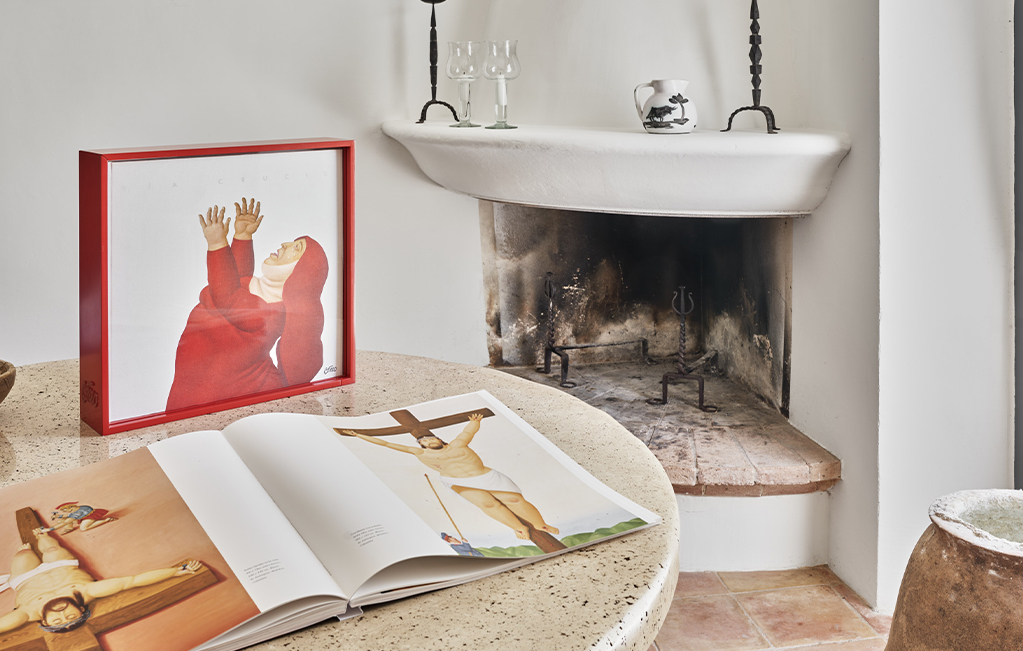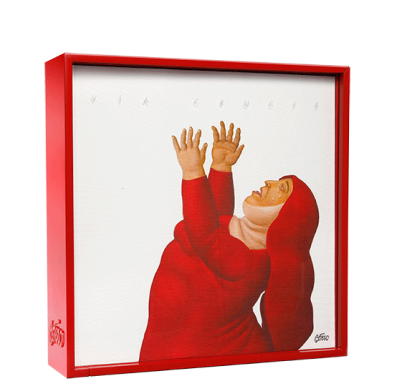We commemorate the legendary Botero through our exclusive edition of Vía Crucis
At ARTIKA we wanted to commemorate the fact that this month marks the one-year anniversary of the publication of Via Crucis, our last collaboration with Fernando Botero. However, fate has struck in September with some bad news: the maestro has passed away at the age of 91. We would like to pay tribute to the great artist and express our commitment to study and share his work.
A double tribute
Botero was one of the most iconic artists to come out of Latin America and a painter and sculptor with an universal appeal. His works are recognised and admired the world over, yet he never forgot his roots. That is why he donated a large part of his work to the Botero Museum in Bogota and to Medellin’s Antioquia Museum. In 2012, he donated one of the most important series of his career to the latter: Vía Crucis.
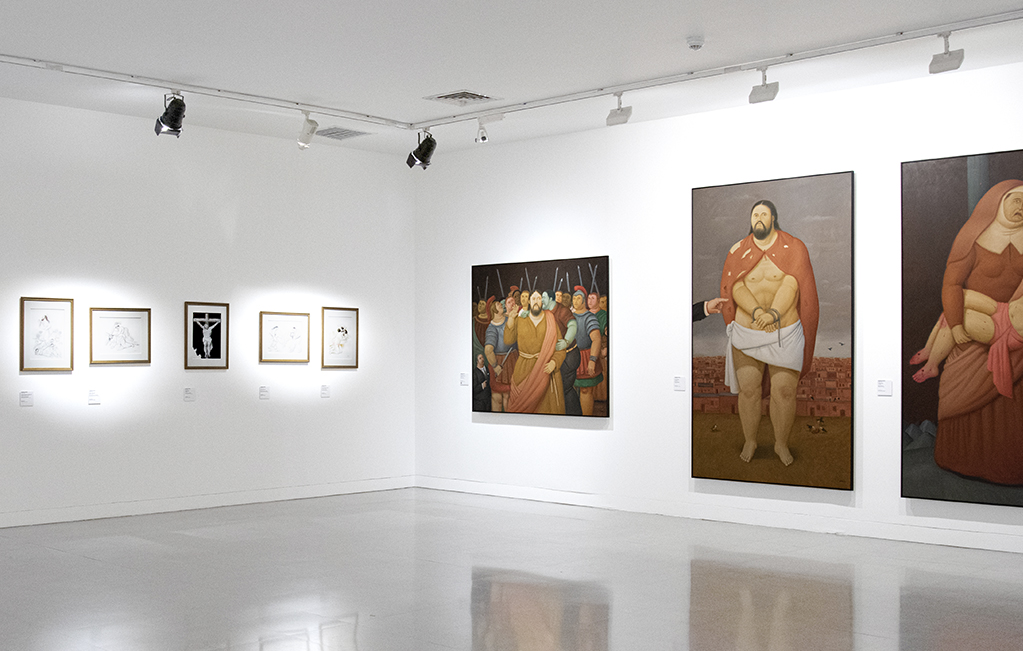
Vía Crucis exhibition at the Museum of Antioquia in Medellín, Colombia.
A year has now passed since ARTIKA’s last collaboration with Fernando Botero. The artist was deeply involved in every phase of the project, focused on creating an art book based on his masterpiece. One of the defining qualities of our edition of Vía Crucis is that it is a double homage: Botero pays tribute to his native Colombia and, at the same time, to his major influences as an artist.
The keys to Botero’s art
Botero never lost sight of simplicity in his commitment to volume and roundness, which is why his figures never look overdone. He always stressed that he did not paint or sculpt “fat” forms, but rather that it was his way of expressing how forms exist in a space.
His art emanates tenderness and sensuality. But it is also capable of condemning cruelties and injustices, like his representation of Jesus on the way to Calvary. The scenes in Vía Crucis conjure up images of the suffering of a torture victim, in this case a flesh-and-blood Jesus.
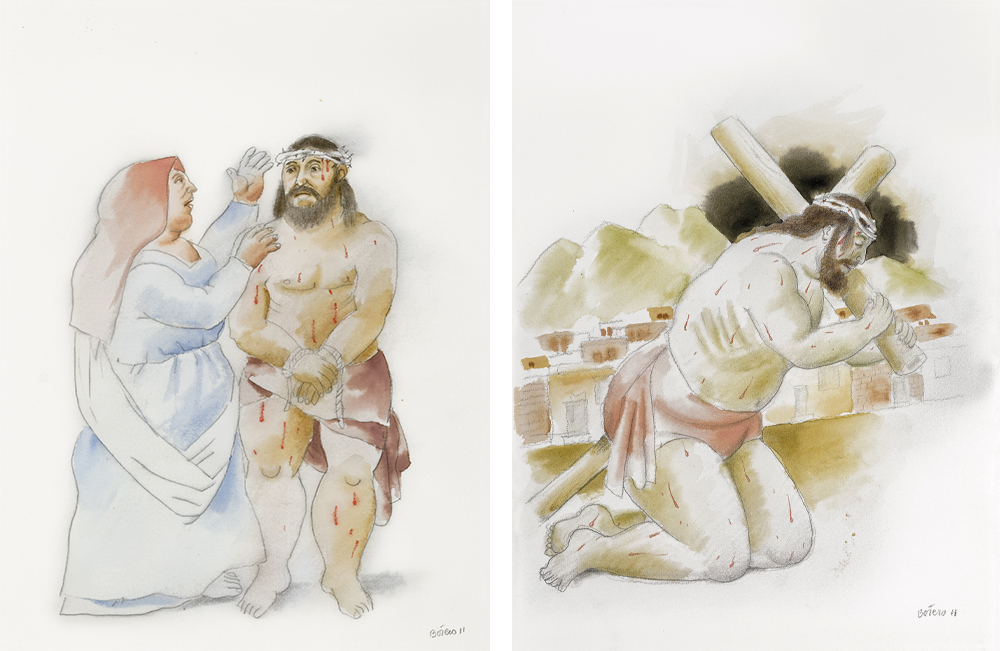
Left: Jesus and his mother, 2011. Watercolor, pencil and colored pencil on paper, 15.7 × 11.8 in. Museum of Antioquia, Medellín, Colombia.
Right: Jesus falls the first time, 2011. Watercolor and pencil on paper, 15.7 × 11.8 in. Museum of Antioquia, Medellín, Colombia.
Vía Crucis helps us to understand the universality of pain through moving and expressive images. Botero’s interpretation of Jesus’ final hours reveals that human emotions transcend cultures, ages and beliefs.
A unique vision of the Passion of Christ
From his arrest to his crucifixion, as described in the Gospels, Jesus’ journey has inspired a host of masterpieces over the history of art. Here, Botero’s contribution provides a completely original take on a classic theme.
In this series, the master explores his own intimate world and incorporates references to his homeland. Some of the paintings, for example, refer to the landscapes and streets of his childhood and, at the same time, offer numerous visual references to the artists who influenced him the most.
The result is a striking combination of iconographies where, for example, Jesus carries the cross through the streets of a town in Colombia, or 20th century soldiers appear among the Roman centurions and soldiers surrounding Christ. Botero’s memories and reflections are thus intertwined with references to artists such as Titian, Antonello da Messina and El Greco.
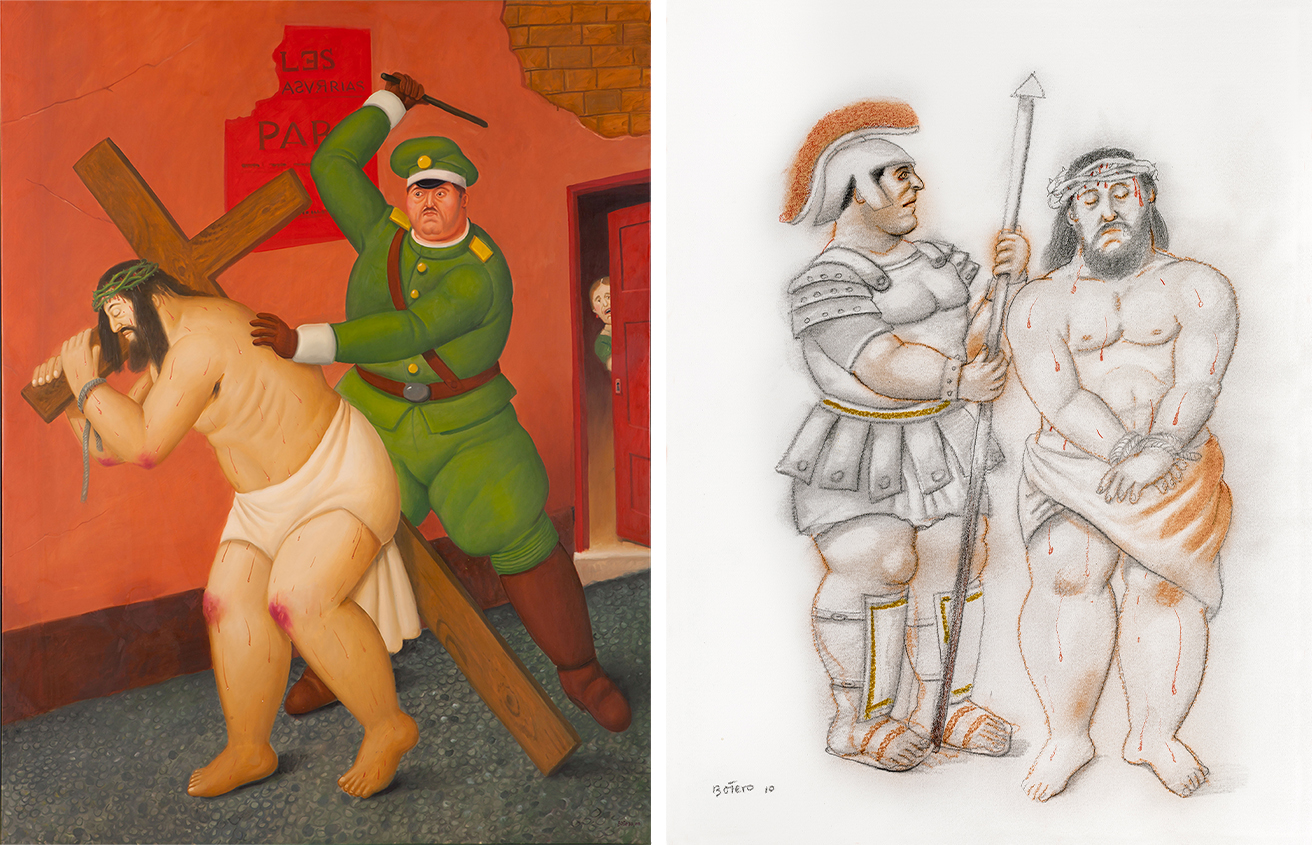
Left: El camino de las penas (The way of sorrows), 2010. Oil on canvas, 74.01 × 57.4 in. Museum of Antioquia, Medellín, Colombia
Right: Jesus is taken prisoner, 2010. Pencil and colored on paper, 15.7 × 11.8 in. Museum of Antioquia, Medellín, Colombia
An artist’s most important trait, which is neither learned in academies nor deduced by copying the brushstrokes and techniques of others, is to have a unique vision. This is the reason why there is an unmistakable quality that shines through in each of his pieces, throughout his vast artistic production. Beyond his unique style, we recognise the artist’s soul and vision. All these nuances are reflected in Vía Crucis.
An artist book that encapsulates Botero’s art and background
Vía Crucis is at once a personal journey through the history of painting, a ground-breaking vision of a classic theme of art, and a commentary on the human condition.
- Numbered edition limited to 2,998 copies, housed in an exclusively designed display case.
- The cover of the Art Book is a never-before-published image, printed on canvas: a detail of the oil painting Cerca de la Cruz (2010).
- The Art Book includes 34 prints attached to the page with three dots of glue.
- Each print is paired with a Bible quote, printed on semi-transparent red paper.
- The Study Book is a collection of unpublished articles written by experts on Botero’s career.
- Fernando Botero participated in every phase of the project, in addition to hand-signing 200 copies.
